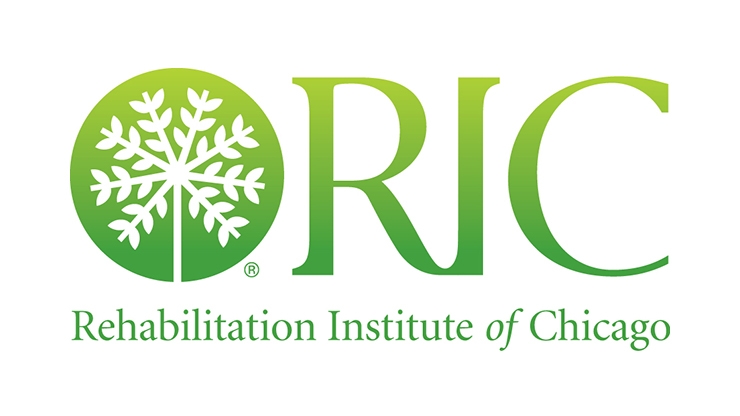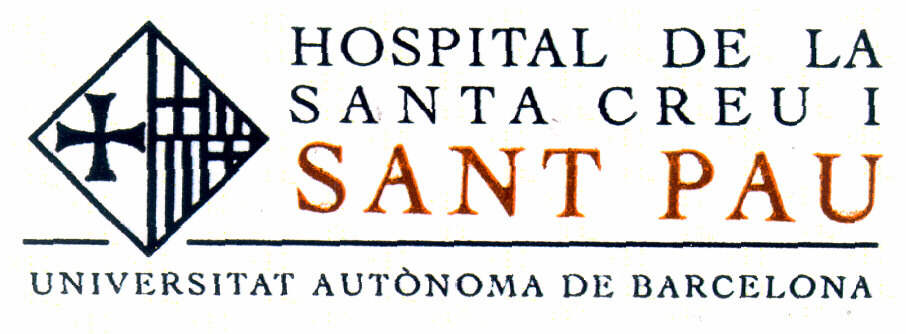Day :
- Orthopedic Surgery | Orthopedic Trauma | Osteoarthritis | Orthopedic Degenerative Diseases
Session Introduction
Yoshihiro Nakamura
University of Miyazaki Hospital, Japan
Title: Morselized bone grafting in total hip arthroplasty with dysplastic hip: Effectiveness of Protrusio technique
Time : 11:30 - 12:00

Biography:
Abstract:
Total hip arthroplasty is a standard treatment for patients with symptomatic osteoarthritis secondary to developmental dysplasia of the hip. Better long-terms survival has been observed among patients who have undergone anatomical hip reconstruction. However, as a result of deficient acetabular bone loss, autogenous bone grafting was performed to improve acetabular coverage. In acetabular reconstruction in patients with dysplasia at our institution, we routinely place the cup at the anatomical hip center or slightly high hip fixation aiming at cup-CE angle 0 degree. The purpose of this study was to evaluate the 5 to 11-year follow-up result of dysplastic hip with cementless cup without bulk bone or reconstruct ring. There were 101 primary THA. We examined the clinical and radiographic evaluation. Cup coverage and hip center were measured as cup-CE angle and horizontal and vertical distance. The minimum cup-CE angle was -2° (mean, 20.3°) and tended to be high hip center and many bone grafts. No cup revisions were required and there was no radiographic loosening. All cases use morselized bone only and no need for bulk bone. Low CE angle, even if lower than 0°, as long achieved good press-fit fixation, not only long-term results are obtained, remodeling of the bone can be expected.
Satya Pal Sharma
University of Bergen, Norway
Title: Predicting outcome in frozen shoulder (shoulder capsulitis) in presence of comorbidity as measured with subjective health complaints and neuroticism
Time : 12:00 - 12:30

Biography:
Satya Pal Sharma is a Family Physician with special interest in musculoskeletal disorders and in particular shoulder problems. He currently teaches medical students at University of Bergen and family physicians of musculoskeletal disorders. He is a PhD Student/Research Fellow at Institute of Global Public Health and Primary Care, University of Bergen along with his part- time work as Family Physician.
Abstract:
Statement of the Problem: Much has been focused on frozen shoulder and various treatment strategies both conservative and surgical and their outcome. Little is discussed about the comorbidities that may affect the treatment outcome in the condition.
Purpose of the Study: The objective of the study was to investigate whether subjective health complaints and neuroticism can predict treatment outcome in patients with frozen shoulder.
Methodology & Theoretical Orientation: Hundred and five (105) patients divided in two groups: Intervention group with 69 patients and control group with 36 patients, recruited in the main randomized controlled trial study, filled in three questionnaires; the Subjective Health Complaints (SHC) inventory, the Neuroticism (N) component of Eysenck Personality Questionnaire, revised short form (EPQ-R) and SPADI at inclusion, at 4 weeks and 8 weeks. Both total SHC score and subscales in SHC were tested.
Findings: There were no statistically significant differences in demography between the groups at baseline. Pseudoneurology subscale in SHC had significant predictive power p<0.001 in control group at baseline. Intervention group and shoulder pain duration exhibited statistical significant predictive power p<0.001 and p<0.005, respectively but not the control group in change in SPADI after 8 weeks (SPADI at baseline minus SPADI at 8 weeks). Total SHC score, SHC subscales other than pseudoneurology and Neuroticism were non predictive of outcome in frozen shoulder.
Conclusion & Significance: In broader picture, psychometric parameters as measured by Subjective Health Complaints and Neuroticism (N) component of Eysenck Personality Questionnaire, revised short form (EPQ-R) did not predict outcome in frozen shoulder measured by shoulder pain and disability index. One may conclude that in general psychometric parameters probably do not predict outcome in frozen shoulder may be because frozen shoulder is a distinct clinical condition.
Md. Abul Kenan
Shahid Sayed Nazrul Islam Medical College, Bangladesh
Title: Diaphyseal fracture-nonunion of forearm bone treated by compression plating aided with autologous bone grafting: A study outcome
Time : 12:30 - 13:00

Biography:
Md. Abul Kenan has completed his Master of Surgery in the field of Orthopedics from Dhaka University, Bangladesh in 2008. He entered as 1st class Government officer under Ministry of Health and Family Welfare, Government of the People’s Republic of Bangladesh and still working without any interruption. Currently he is working as assistant professor & Head of the Department of Orthopedic Surgery at Shaheed Syed Nazrul Islam Medical College, Kishoreganj, Bangladesh.
Abstract:
Background & Aim: The forearm fulfills an important role in the integrated function of the upper extremity. Fracture nonunion of forearm bone singly or both interfere with normal forearm function grossly. Nonunion of the forearm bone cause dysfunction of forearm as they effect interosseous membrane, elbow and wrist and limit the rotational movement of forearm that is pronation and supination, stiffness of the elbow and wrist due to long term immobilization. But treatment of fracture nonunion of forearm bone is still a therapeutic challenge and outcome is moderate at best. This study was design and carried out to assess the outcome of treatment of fracture nonunion of forearm bone by dynamic compression plating aided with autologous bone grafting from iliac crest.
Method: A prospective study was carried out from January 2010 to December 2015, where 20 cases of fracture nonunion of forearm bone (radius n=8, ulna n=6, both n=6) were treated in government/private hospitals situated in Kishoreganj of Bangladesh. Surgical procedure was performed following AO principle by dynamic compression plating aided with autologous bone grafting taken from iliac crest. Outcome was assessed by regular follow up, radiograph and functional outcome design by Anderson et al. Follow up time was 10 months to 24 months.
Results: Bony union was achieved within a median of 5 months and 18 patient achieved union within 4 months of revision surgery. According to the system of Anderson et al. 11 cases (55%) achieved excellent result, 4 cases (20%) had satisfactory and 5 cases (25%) had an unsatisfactory result. 1 patient developed infective nonunion.
Conclusion: This study showed that treatment of fracture nonunion of forearm bone using technique of compression plating osteosynthesis aided by autologous bone grafting represent an effective treatment option of this challenging condition.
Anilkumar V
Semalk Hospital, India
Title: An innovative method of closed reduction and percutaneous pinning for all types of fracture distal end radius by using 6 K-wires in 2 plains
Time : 13:00 - 13:30

Biography:
Born in 1960 in Kollam Dist.,Kerala state in India. Completed medical graduation from Government Medical College,Trivandrum in the year 1986. Completed the post graduation in 1989 from the same institution under the guidance of Prof.Cheryan Thomas and Prof.T.C Joseph. He was married to Dr.Sakunthala in the year 1988.Started his orthopedic carrier as junior orthopedic surgeon at Semalk Hospital, Ottapalam in the year 1989.Mean while for 7 years from 1993 to 1999 he served for government sector and returned back to Semalk Hospital and continuing as the senior Orthopedic Surgeon. He had done more than 5000 orthopedic surgeries of various types concentrating mainly on trauma. From 1999 onwards he started his research work in various fractures of the ends of the long bones by closed reduction and percutaneous fixation with K-wires. Most of the works were done for fractures of distal end Radius, even though there were good number of cases of elbow and ankle. The mode and configuration of fixations were modified several times according to the results. At various stages of modifications of the configurations of the fixations he had presented more than 10 papers in various orthopedic conferences at national and international level.
Abstract:
Introduction: Distal End Radius (DER) is one of the most common fractures. Conventional mode of treatments is POP, ORIF and External Fixation. Presently percutaneous K-wire fixation is used as an add-on procedure to other methods.
Objective: The aim of this study is to find can we do CMR and per-cutaneous pinning alone for fracture DER as a new mode of treatment including comminuted and intra articular?
Materials & Method: It is a prospective study of 200 cases over a period of 4 years from 2011 to 2015. Patients aged ranged from 18 to 84 and grouped it into three groups. 109 patients in Group-1 (aged: 18-45), 65 patients in Group-2 (45-60) and Group-3 (>60) with 26 patients.
Procedure: Two triangles are created by crossing 6 K-wires in plains without skin incision by stabilizing the DRUJ. No wire protruding outside the skin, allows full range of finger movements & Radio-carpel movement from the 1st POP day onwards except supination and pronation. The chance of residual deformity is reduced by the scaffolding action of the crossed K-wires forming 2 triangles in 2 plains by encircling the compressed comminuted metaphysical fragments and by stabilizing the intra-articular fragments.
Results: The results are evaluated on the basis of Green and O’Brien score modified by Cooney by analyzing pain, functional status, range of movement and grip strength. Overall result comes to 92.5% with a split up of 96% for Group-1, 91% for Group-2 and 81% for group-3.
Conclusion: The new mode of closed reduction and percutaneous pinning alone can be used as a surgical mode of treatment for all types of fractures of distal end of Radius.
Discussion: Recent literature shows that specific technique is not as important as attaining anatomical reduction. Clinical outcome and biomechanical studies demonstrate that maintenance of palmar tilt (normal 11), ulnar variance (2 mm) and radial height (normally 12 mm) is the most important factor for obtaining good results. The 2 sets of K-wires crossing in the radial styloid and 2 transverse pins which stabilize the DRUJ prevent the radial inclination deformity, radial shortening and negative ulnar variance. The 2 transverse pins parallel to the articular surface and 2 proximal pins directing to lunar impacted fragments maintain the congruity of the radial articular surface. The 2 sets of 3 K-wires in 2 plains add strength and stability and maintain the normal palmar tilt and prevent metaphysial collapse. It can also hold the fragments of Barton's.
Biography:
Abstract:
Todd Kuiken
Rehabilitation institute of Chicago, USA
Title: Targeted muscle and sensory reinnervation for amputees
Biography:
Abstract:
Rachel W Li
Australian National University, Australia
Title: Heparanase regulates inflammatory mediators in rheumatoid arthritis
Biography:
Abstract:
Marius Valera P S
Hospital de la Santa Creu i Sant Pau-Universitat Autònoma de Barcelona, Spain
Title: Reliability of Tönnis classification in early hip arthritis: A useless reference for hip-preserving surgery
Biography:
Abstract:
Samo K Fokter
University Medical Center Maribor, Slovenia
Title: The innovation trap: A nation-wide problem of modularity in primary total hip arthroplasty
Biography:
Abstract:
Beatriz Minghelli
Piaget Institute, Portugal
Title: Nomogram: Instrument for selection of possible cases of low back pain
Biography:
Abstract:
Mehrnoosh Ghandili
Guilan University of Medical Science, Iran
Title: A survey on transfusion status in orthopedic surgery at a trauma center
Biography:
Abstract:
- Pharmacological Treatment | Physiotherapy | Orthopedic Degenerative Diseases | Connective Tissue Disorders and Soft Tissue Rheumatism
Session Introduction
Kryssa Justine Agpoon
Korea University Medical Center-Guro Hospital, South Korea
Title: Osteoinduction regeneration using tooth bone graft with BMP-2
Time : 11:30 - 12:00

Biography:
Kryssa Justine Agpoon has her expertise in Oral and Maxillofacial Surgery. She has dedication and pursues her passion to clinical and research of the chosen field. She has completed her Master’s degree and Hospital training at Philippine General Hospital, Korea University Graduate School and Korea University Medical Center for her dedication to academic preparation. She has recently published an article at British Journal of Oral and Maxillofacial Surgery about mandibular stability using sliding or conventional four hole plates for fixation after bilateral split osteotomy for mandibular setback. She intends to do more research about oral and maxillofacial surgery.
Abstract:
Despite the fact that improved biomaterials are needed to match the affectivity of autogenous bone grafts, as this is still superior to that of synthetic bone grafts, osteoinductive materials such as BMP-2 would be perfect candidates for combination with biomaterials to achieve this task. However, different sizes of biomaterials have shown insufficient consideration for important prerequisite for its development. This study aimed to investigate the estimated increase in osteoinductive activity of different shapes of tooth bone grafts (TBGs) with BMP-2 in rabbit calvarial defects compared with synthetic bone grafts based on histomorphometric and histological analysis. We randomly divided a total of 40 calvarial defects in 10 male New Zealand rabbits into four experimental groups: Group-1: Powder-type graft+BMP; Group-2: Block-type graft+BMP; Group-3: Block-type graft only; and Control group: Synthetic bone+BMP. In each rabbit calvarium, we formed four circular bi-cortical defects with a diameter of 8 mm and filled them with bone graft materials. After four weeks (n=5) and eight weeks (n=5), we conducted histomorphometric and histological analyses to determine the changes in bone area in the different groups. We assessed the tissue volume, bone volume and percent bone volume in each group; the BMP-2/tooth powder-type graft and the TBG alone stimulated mesenchymal cells to create endochondral ossiï¬cation and direct bone formation and showed significant differences between groups (p<0.05). The changes in bone volume ranged from 12 to 23% with powder type tooth biomaterial and tissue volume ranged from 113-123 mm3 in the different groups. We concluded that powder-type TBG was effective as a carrier of BMP-2, which significantly accelerated bone formation in the acid-insoluble TBG carrier system
Ahmad Alqahtani
King Khaled University, Saudi Arabia
Title: Acute compartment syndrome
Time : 12:00 - 12:30
Biography:
Abstract:
Acute compartment syndrome (ACS) is one of the most serious emergencies cases in orthopedics and trauma cases. It is a painful condition caused by the increase interstitial pressure within a closed osteofascial  compartment which impairs local circulation. We have analyzed associated factors, causes and complications in 79 patients with acute compartment syndrome whom we diagnosed and treated in Assir Central Hospital over a period of five years. In 77% there was an associated fracture, 65% of which were open fractures. Men were involved in 90% of the cases, 63% of which were under 30 years of age. In about 60%, the cause was road traffic accidents. The other 40% caused by fall from height, crush injuries, gunshot, snakebites and burns. Acute compartment syndrome of the leg, with associated fracture of the tibia, was seen in most of the cases (45%) followed by the forearm (25%). In the remaining 30% the thigh, foot and hand were involved. Seven patients had amputation as a complication of acute compartment syndrome of the leg, three of which were diabetic and hypertensive. No amputation done for the upper limbs. Infection (14%) and loss of function (10%) were among the complications of acute compartment syndrome. From this study, we found that young patients, especially men, were at risk of acute compartment syndrome after injury. When treating such injured patients, the clinical diagnosis should be made early to improve the outcome and lessen the complications.
Ranjeet Kumar
Liaquat Medical University of health Science, Pakistan
Title: Outcome of Ponseti treatment in idiopathic club foot in school age children
Time : 12:30 - 13:00

Biography:
Dr. Ranjeet Kumar has completed his medical education from Liaquat Medical University of health Science, Pakistan. He was Sr. Causality Medical Officer for one years at Ziauddin University Hospital, Pakistan. He has visited to South Korea in 2015 to present his research work in Korean Orthopaedic Association.
Abstract:
Introduction & Aim: The Ponseti method of treating club foot has been shown to be effective in children up to two years of age. However, it is not known whether it is successful in older children or not. The goal of treatment is to correct all components of deformity so that the patient has a pain-free, plantigrade foot with good mobility, without calluses and without need to wear special or modified shoes. The purpose of this study is to determine outcome of Ponseti treatment in idiopathic club foot in school age children.
Method: This study was conducted in Jinnah Postgraduate Medical Centre, Karachi, Pakistan from 1st Jan 2013 to 31st April 2015. Total number of cases was 49. The study included 67 feet of 49 patients (29 boys, 20 girls; mean age 6 years; range 3 years to 10 years) with idiopathic clubfoot deformities of Pirani score of IV, V and VI. All patients had manipulation casting in accordance with the Ponseti technique and percutaneous Achilles tenotomy was performed in the presence of persistent equinus under local anesthesia. The data was analyzed using software SPSS version 13 and presented in form of tables and charts.
Results: We followed the functional Ponseti Scoring System and got good to excellent results in 44 patients - 89.79% (58 clubfeet - 86.56%) at mean 2 year of follow up. Improvements for each separate component (varus, medial rotation of calcaneo-pedal block and adducts) were found to be statistically significant. Painless, supple, plantigrade and cosmetically acceptable feet were achieved in 44 (89.79) clubfeet.
Conclusion: The Ponseti method is an effective method in correcting the deformities of clubfeet even in school age children.













